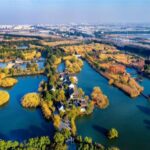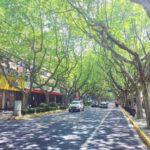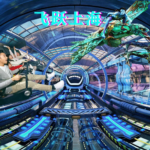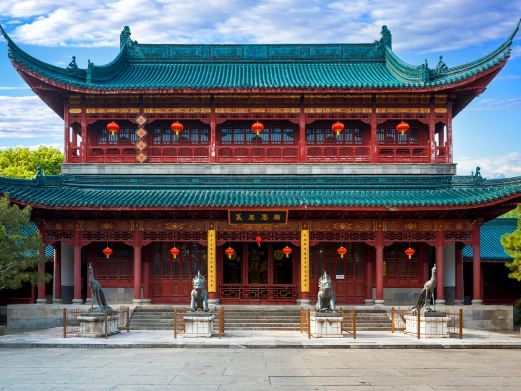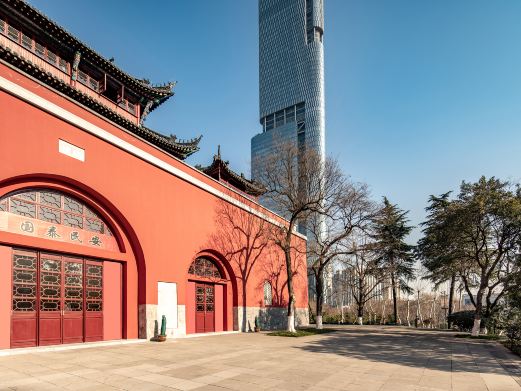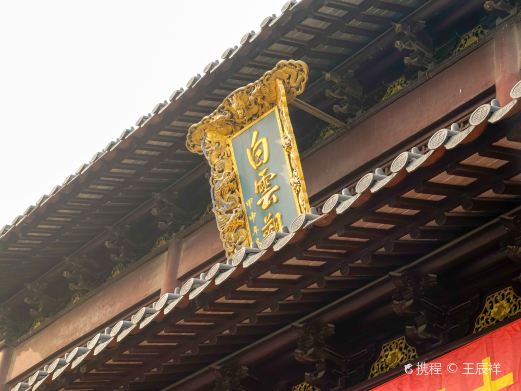Along the stone-paved path at the foot of the mountain beside the Elephant-Shaped Rock, walking about fifty or sixty meters westward, the cliff carvings of rock relief sculptures will unfold before your eyes. On a reddish-yellow cliff with uneven heights, more than 100 figures of different sizes and various shapes are engraved according to the terrain. The contents include Taoist legends and Buddhist stories.
All are concentrated in the southwest corner of the mountain. They are carved in relief according to the mountain terrain. The entire group of sculptures is distributed on the reddish-brown cliff that is 17 meters long and 8 meters high. There are more than 100 figures in total. The large ones are about the same size as real people, and the small ones are only 10 centimeters. There are figures standing, sitting, jumping, and lying down. The images are rich and the expressions are diverse. According to expert appraisal, the carvings were made in the late Eastern Han Dynasty in 170 AD. It is 200 years earlier than the Mogao Caves in Dunhuang built in the second year of Jianyuan (336). Although these figures have endured more than 1,000 years of wind and rain, they are still vivid and shining on the stone wall. Experts believe that the Kongwang Mountain cliff carvings. In the past, it was always believed that Buddhism spread from west to east. The discovery of the Kongwang Mountain cliff sculptures undoubtedly challenges the traditional conclusion. It is a treasure in the history of Chinese Buddhism and art history. All the cliff sculptures of Kongwang Mountain are gathered in the southwest corner of the mountain and are carved in relief according to the mountain terrain. The picture is 17 meters long from east to west and 9 meters high. There are about 105 gods and spirits of different sizes engraved. The cliff Buddha statue is about 129 meters high. The carving content is divided into Buddhist stories, Jataka tales, and secular life stories. The carving techniques of the sculptures have distinct characteristics of Han dynasty stone reliefs. Carving techniques such as intaglio, raised line carving, bas-relief, high relief, full-body relief, and incised line carving are fully utilized and exerted in the sculptures. It consists of a banquet picture, a picture of people forming a human pyramid, as well as Buddhist pictures of nirvana, sacrificing oneself to feed a tiger, and figures of Buddhas, Bodhisattvas’ disciples, guardians and donors to form the entire picture.Opening hours: Open all year round and all day. The specific business status is subject to the opening situation on that day.


